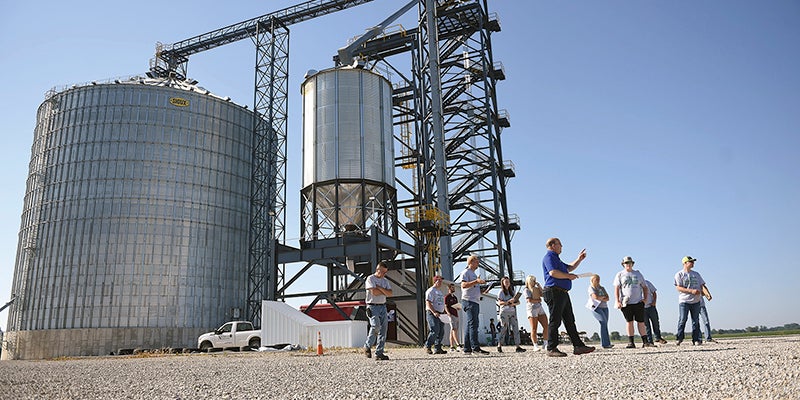Public works bill may impact Austin
Published 10:39 am Wednesday, April 8, 2015
By Maria Herd
newsroom@austindailyherald.com
Gov. Mark Dayton introduced an $842 million public works bill on Tuesday that could affect roofing concerns at Riverland Community College, animal health and Austin’s housing needs.
Riverland is the highest priority for improvements in Mower and Freeborn counties. Under the proposal, Minnesota State University and Colleges campuses will receive a total of $140 million to improve facilities, including $1.6 million for roofing for Riverland buildings in Austin and $2.2 million to Riverland in Albert Lea.
“There are a lot of campuses in desperate need of repairs and improvements,” Dayton said.
Judy Enright, physical plant manager with Riverland, said the funding would go toward roofing a majority of the campus buildings in Albert Lea.
Dayton also recommended $18 million to renovate and upgrade veterinary labs at the University of Minnesota for research with large animals and animal pathogens like porcine epidemic diarrhea virus (PEDv) outbreaks and the recent avian flu outbreaks in Minnesota. State Rep. Jeanne Poppe, DFL-Austin, said the money is important, especially in light of the recent avian flu outbreak.
“As a state, we need to act now to help farmers battle these diseases,” Poppe said in a press release. “Minnesota is the top turkey producing state in the country and is second in the country in pork sales. The Governor’s bonding bill will help agriculture. With historically low interest rates, it makes good sense.”
Poppe, the minority lead on the Minnesota House agriculture finance committee, said additional support is needed.
“Last year we took the first step and appropriated some research money to combat PEDv,” Poppe said in the release. “But we need to improve and upgrade the state’s research facilities so our experts are ready to respond at the first sign of an outbreak. Minnesota’s farmers deserve nothing less.”
Other notable statewide investments include $12 million in grants to assist communities with business development, $50 million in housing projects, $2.5 million for historic preservation, $61.4 million for correctional facility improvements and $24.1 million toward waste and sanitation facilities.
Communities like Austin could benefit from increased housing funding, as the city is making plans to put in 30 town homes in the Fox Point development in northwest Austin.
Austin City Administrator Craig Clark said the state’s housing project funding would likely help communities in need of affordable housing, but more attention is needed for workforce housing projects dealing with homes for middle-class families.
“That’s one of the things that we’re hoping is addressed with Sen. Sparks’s bill that encourages more workforce housing, that we can span the gap on more market-rate projects,” he said.
In promoting his list of preferred projects, Dayton struck back against the notion that the Legislature’s plate is too crowded before the session ends May 18 to craft a borrowing bill and a two-year budget. Majority House Republican lawmakers say they are reluctant to pass a construction package this year, creating a high hurdle for a bill that requires three-fifths votes to pass.
Dayton’s administration said 43 percent of the proposed projects benefit Greater Minnesota, 38 percent fall in the seven-county metropolitan area and 19 percent are deemed to have statewide significance. The plan would require $78 million in state debt payments over the next two years and more into the future.
If lawmakers don’t pass a bill this year, Dayton said those with projects at stake shouldn’t bank on seeing them in a plan he produces for consideration in next year’s session.
Project requests throughout the state amounted to $1.9 billion this year, yet less than half of those requests were included in the current draft of the bill.
However, it’s not too late for projects that didn’t make it into the proposal.
Dayton encouraged legislators to speak up and collaborate on the priorities of proposed projects. The state Legislature will vote on the jobs bill in the next six weeks.
“I’m wide open and flexible to negotiate with Republicans and Democrats on both sides of the aisle,” he said.
According to Dayton, some state House Representatives have voiced disapproval of the jobs bill and would like to scrap it altogether.
“Why wouldn’t we take advantage of this budget efficiency we have right now and make improvements to the state?” he said.
Last year, state improvement requests amounted to $3 billion. Dayton guarantees there will be over $4 billion in requests next year if this bill is not passed.
“Greater Minnesota has a great stake in this bill going through,” said Dayton. “It would be tragic to walk away from it.”
House Capital Investment Committee Chairman Paul Torkelson said the GOP budget proposal doesn’t include room for extra debt payments and his panel doesn’t plan to adequately scrutinize projects until after legislators adjourn for the year. House Speaker Kurt Daudt, the Legislature’s top Republican, wasn’t swayed by the governor’s nod to low interest rates as a reason to act now.
“I don’t think interest rates will be that much different this year than they will be next year,” Daudt said.
Senate Capital Investment Committee Chairman LeRoy Stumpf, a Democrat, wouldn’t close the door on passing a borrowing plan.
“The infrastructure of the state is in need of money to keep everything in shape,” he said.
Senate Majority Leader Tom Bakk, another Democrat, said he’s contemplating a package with a narrower focus and lower price tag. Bakk stressed the Senate’s top priority is crafting a budget — a bonding bill is more of an afterthought.
“That’s not the real work of this session,” he said.
Minnesota lawmakers typically consider a tailored bonding bill in budget-setting sessions but hold off on a large plan until the election year. Dayton’s bill is far larger than others adopted in odd-numbered years. That said, the Legislature has declined to approve a general borrowing bill of some size only twice in the past 32 years.
— The Associated Press contributed to this story.





